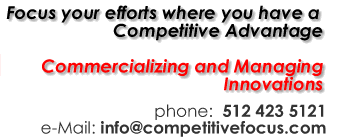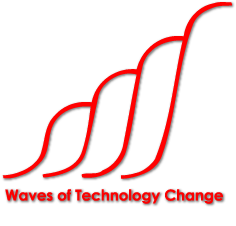

 |
Innovation Process | |||
Innovation is a complicated activity. And innovation takes investment. However, firms need to balance their investments in on-going products, which provide the cash to keep the firm afloat, and future products, innovations, to keep the firm in business in the future. The innovation process includes the generation and collection of ideas; refining and culling the ideas; deciding where to invest, where to license; nurturing the ideas that match your business; and ultimately, productizing those innovations.
|
|
"The Innovation Framework: Customized for your Organization," a two-day workshop for management teams, appropriate for an offsite event, provided by Leslie Martinich. request schedule "Leading Innovation," a full-day workshop for engineering managers, delivered by Leslie Martinich. request schedule "Managing Innovation," a one-hour presentation for engineering organizations, Speaker: Leslie Martinich. request schedule |
||
|
 |
"Managing innovations, standards and organizational capabilities," L. Martinich, Proceedings of the 2002 IEEE International Engineering Management Conference. Abstract Winning through Innovation: A Practical Guide to Leading Organizational Change and Renewal Charles A. O'Reilly III, Michael L. Tushman, Harvard Business School Press, 2002 The Innovator's Dilemma, Clayton Christensen, Collins Business, 2003 Innovation: The Attacker's Advantage, R. N. Foster, New York: Summit Books, 1986 |
||

 Trap: Allocating too much money to innovative projects and neglecting the on-going business. You need both.
Trap: Allocating too much money to innovative projects and neglecting the on-going business. You need both.